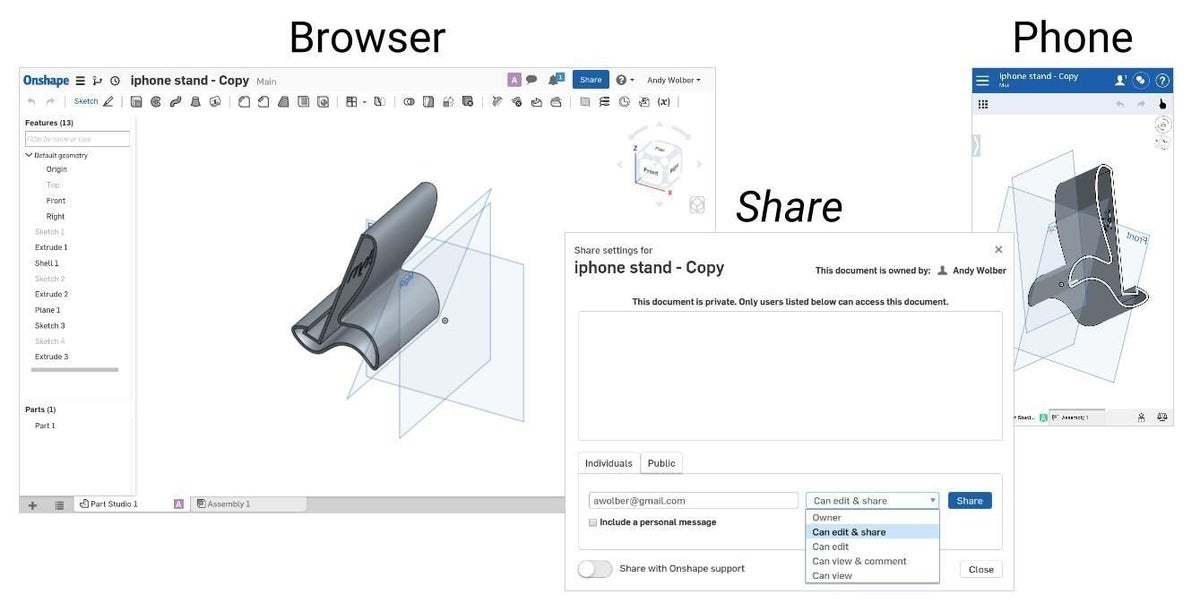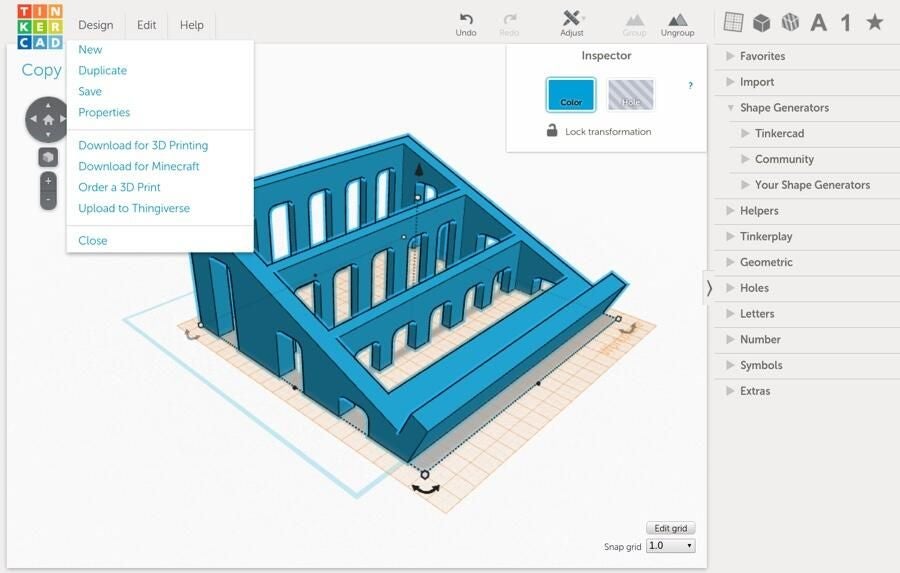
Show me a person with a Chromebook and an internet connection, and I’ll show you someone who holds a powerful creative tool. You can draw, make music, record an interview, and create video explanations with a Chromebook.
In recent months, the number of creative apps you can run on a Chromebook increased as developers built cloud-based CAD and 3D design apps. These apps used to require powerful workstations to run. Today, it still takes a lot of processing power to display three-dimensional models fluidly, but much of the work has moved from local hardware to cloud software.
Demand for CAD has increased, too. The surge of interest in 3D printing and virtual reality expanded the market beyond the traditional world of engineers, manufacturers, and programmers. After all, you need software to design a 3D object before you can display or print it.
Today, you can design and render 3D objects entirely in a browser. And, the available tools serve the needs of a wide range of skill levels–from students and hobbyists to professional engineers and designers.
1. Collaborative CAD in the cloud
Onshape provides collaborative CAD in the cloud. Think Google Docs, but for 3D objects. Create an object in your browser, then share it with other people whom you may allow to view, comment, edit, and/or share. Onshape also makes an Android and iOS app.
Onshape provides most features–excluding support–free. These include all the standard 3D design features you’d expect, as well as versioning, branched design variations, and assembly modeling (e.g. for multi-component objects). Onshape imports and exports designs in a wide range of 3D file formats, which allows it to work with other 3D apps. The professional version adds support for $100 per person per month.
Clara.io (an Onshape partner) and Lagoa each perform collaborative cloud modeling and rendering. These tools allow people to design a scene with 3D objects that include lighting and textures. In many cases, you can design an object with Onshape, then import the file to create photorealistic images with one of these rendering tools.

2. Run traditional CAD remotely
Frame and rollApp make Windows and Linux desktop apps, respectively, work within your browser. Install and run Windows 3D apps, such as Solidworks–or any other traditional CAD software–on Frame for a monthly fee. Frame lets you switch from a basic system (4GB of RAM and one core) to a more powerful one (a 16 GB, four core unit, plus a GPU) when you need it.
RollApp runs Linux-based CAD software, such as FreeCAD and OpenSCAD. The FreeCADweb.org site describes the software as a “parametric 3D modeler made primarily to design real-life objects of any size.” OpenSCAD supports CAD for 3D solid objects. OpenSCAD builds objects from scripts, not interactive modelling, so it may be harder for a casual user to learn.

3. Learn and print
Another set of sites serve simpler apps, designed to support hobbyists and new 3D designers.
Autodesk’s Tinkercad claims to be a “simple, online 3D design and 3D printing tool for the masses.” You can create and design shapes for free. I had some difficulty logging in from my Chromebook, however. Tinkercad requires that your browser accept third-party cookies to login, and I block these by default. Once I changed my settings, login worked. (Note to Autodesk: Fix this, please.)
MakeThingsNow.com makes things even simpler. You build with blocks and a couple other basic shapes, then export an STL (STereoLithography) file. The site acts much like Minecraft for 3D printing. And, in fact, another portion of the site lets you import Minecraft models. (Unfortunately, Chris Emery, the creator of MakeThingsNow.com, informed me that while the tools work, they’re no longer in active development. Use the tools, but I’d encourage you to print items on your own 3D printer.)
Finally, PublishYourDesign.com gives you a “3D modeling application running in your browser.” Again the focus is on the design of objects to be 3D printed. You can share objects online or download an STL file to print.

4. The open and collaborative future
We’re in an early stage of collaborative CAD and 3D design on the web.
On January 19, 2016, WeDesign.Live announced the alpha release of a new collaborative, open source platform for 3D design. Sylvain Preumont, also of iMakr and My Mini Factory, provided a brief demo of the tool. WeDesign.Live will offer 3D design with collaboration, and also promises live video playback of designs. You’ll be able to watch a video replay of an entire 3D design process to see how people created an object. The team is planning a public beta later this year.
Preumont said, “Sharing is key.”
The future of collaborative design is in the cloud. All of the above apps leave the world of high-powered workstations and installed software behind. A Chromebook and an internet connection may be all the equipment a 3D designer needs. So, go open a new browser tab, sign up for one of the sites above, and create.

What do you think?
What cloud tools do you prefer for 3D design or CAD? Tell us in the comments.